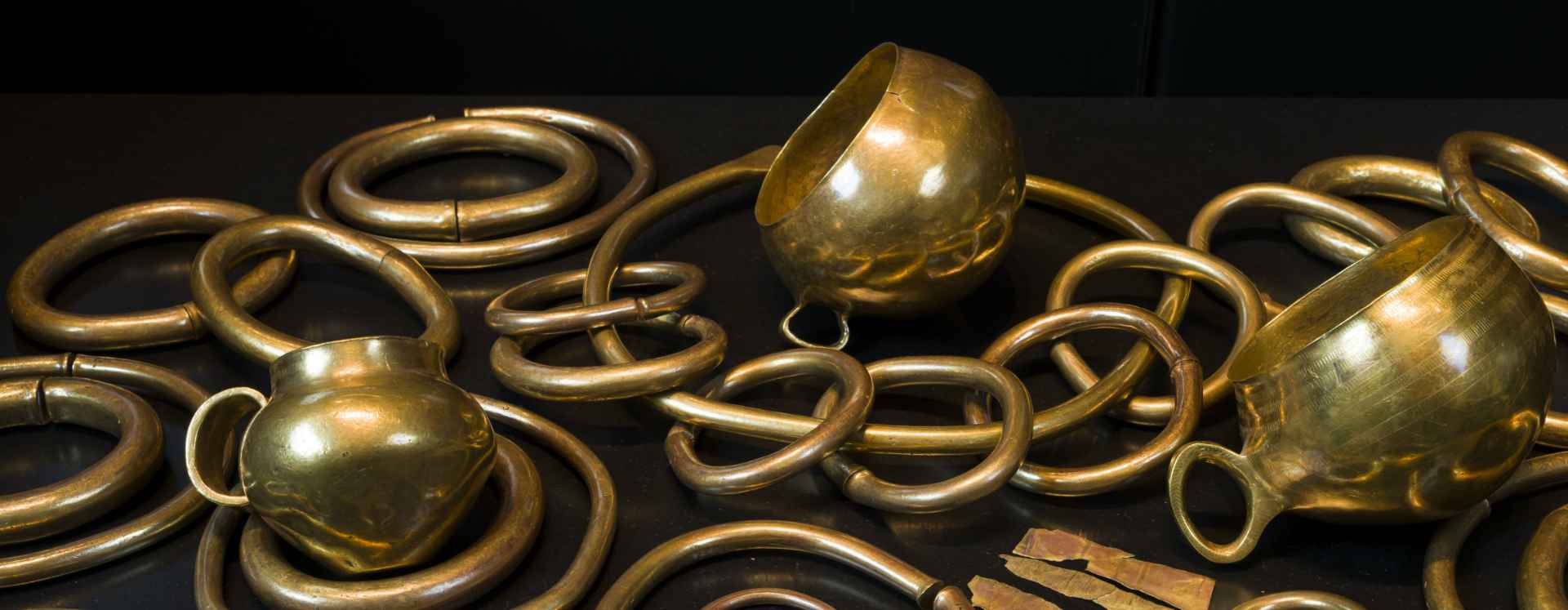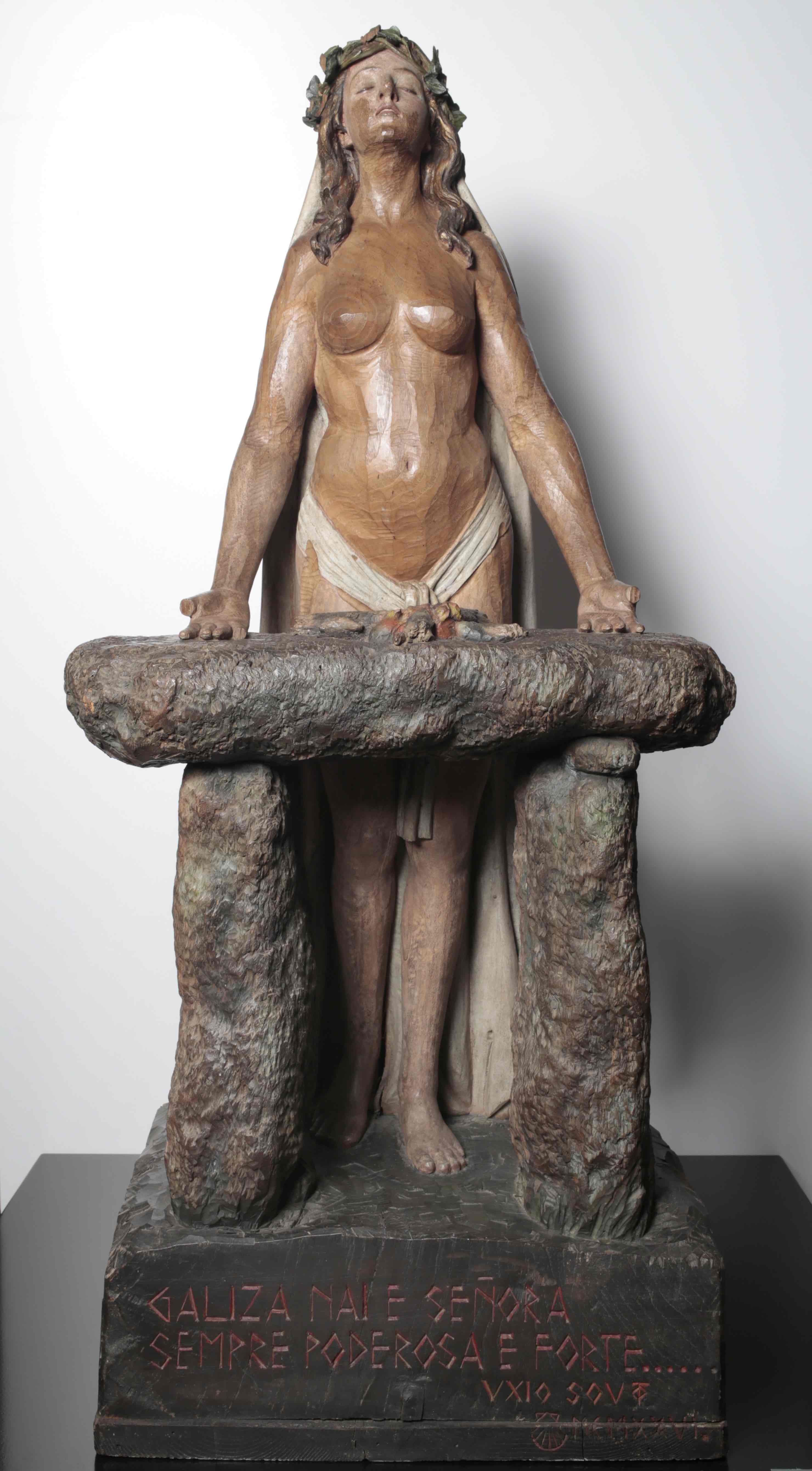GALIZA NAI E SEÑORA (GALIZA MOTHER AND LADY)
Galiza Nai e Señora (Galicia, Mother and Lady) is one of the most representative works from the creative period of the sculptor Uxío Souto Campos prior to the Spanish Civil War. He made it when he was only 21 years’ old and had not begun his studies at the Academy of Fine Arts.
It depicts Galicia as a half-naked druidess with an idealised face, performing an invocation before a stone altar. She is wearing a crown of ivy from which hangs a veil that falls to her feet.
Also known as "Druidesa", this partially-polychrome carving is one of the works that define the primitivist expressionist style of its creator and one that shows his great technical ability in woodworking, which was apparent from his childhood. The features of the carving are enhanced by the colour, which gives a different appearance to each part of the piece.
The theme is based on the Celtic myths to which some of the writers and artists of the time have turned, in search of a unique and differential identity for Galicia.
The text engraved under the altar is inspired by some verses from the poem "Galicia" published by Ramón Cabanillas in 1917: “¡Galicia! Nai e Señora, / sempre garimosa e forte; / preto e lexos; onte, agora, / mañán… na vida e na morte!”
Born in Cuntis in July 1905, Uxío Souto Campos (Cuntis, 1905 - Mexico City, 1990) showed a special aptitude for drawing and carving from childhood. At the age of fourteen he began to work as an apprentice and later as a journeyman in two imagery workshops in Santiago de Compostela, combining this practical training with his studies at the School of Arts and Crafts, where he excelled.
In 1927 he was granted an artist's pension by Pontevedra County Council, extended for three years so that he could study in Madrid at the San Fernando Royal Academy of Fine Arts. In 1931, this Pontevedra institution went on to award him a travel grant for further studies abroad.
Whilst studying sculpture, he became a drawing teacher, combining his sculptural work with his teaching from 1933 onwards.
The outbreak of the Spanish Civil War took him by surprise in Madrid, where he was travelling. He then moved to Catalonia, where he worked as a teacher until 1939, when, as a result of the war, he crossed the Pyrenees to France and was taken in at a refugee camp. There, in his drawings and portraits, he would capture the harsh circumstances he was experiencing.
That same year, he managed to go into exile in Mexico, where he remained until his death.
Label
More information
This carving, so admired by the press of the time, is exhibited in the Castelao Building, next to two very significant works he produced two years later, such as Que volva (1928) and Adversidade e morte (1928), and part of those created during his exile in Mexico, where he married María Aliseda Olivares, also an exile, and where he worked as a drawing and modelling teacher. There, he diversified the materials he worked with: plaster, bronze, wood, black porphyry and marble.
The Museum has a total of fourteen round sculptures and various reliefs, to which must be added his work as a draughtsman and, in particular, the drawings he made in 1939 during his stay in a refugee camp in France.
In 1993, three years after his death, the Museum organised an anthological exhibition in recognition of his creative work.



